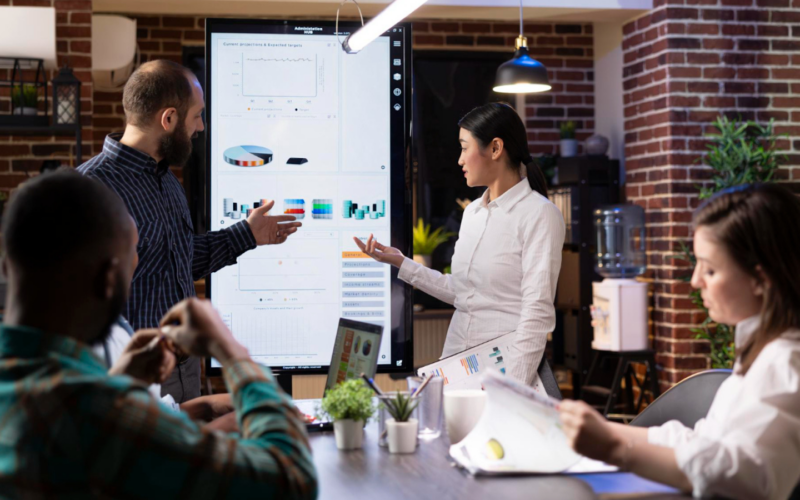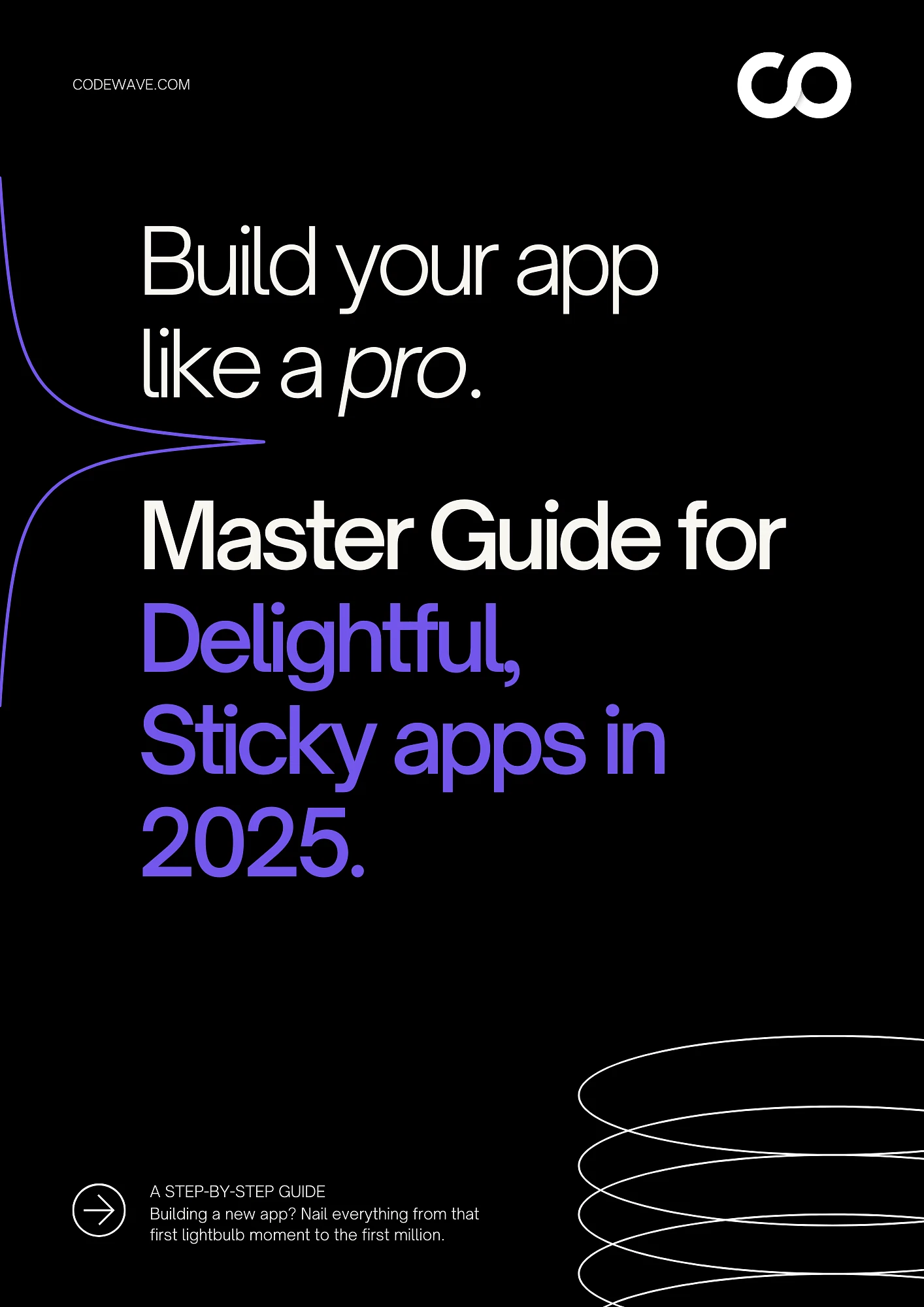A great product doesn’t start with code or capital, it starts with understanding people. That’s why a design thinking-led development company focuses on empathy before execution. Just look at Deakin University’s DesignMind platform, turning Geelong into Australia’s only UNESCO City of Design by using design thinking to connect R&D with real-world innovation.
Yet, many teams still face the same challenge: building products that tick every technical box but fail to truly connect with users. The good news? There’s a proven way to fix that.
In this article, you’ll learn how design thinking can guide your product development from idea to launch, helping you create solutions people genuinely want and need.
Key Takeaways
- Design thinking keeps product development anchored in real user needs, reducing risks and improving adoption.
- Its process moves through empathy, definition, ideation, prototyping, and testing, each stage building on the last.
- Integrating design thinking into the product lifecycle works well alongside Agile and Lean, keeping delivery fast and user-focused.
- Common mistakes include treating research as a one-off, ignoring day-to-day users, and overloading prototypes, all avoidable with the right approach.
- Codewave applies design thinking to turn ideas into tested, market-ready solutions that deliver measurable business impact.
What is Design Thinking?
Design thinking began as a way to apply a designer’s mindset to problem-solving beyond art or architecture. It took shape in the 1960s through design schools and gained traction when companies like IDEO showed how it could fuel better products and services.
The approach flips the usual development process on its head. Instead of starting with features or tech specs, you start with people, their needs, habits, and frustrations.
A design thinking-led development company uses this mindset to keep projects flexible and user-focused from day one. Traditional development, on the other hand, often follows a set plan that can miss the mark when user needs change or new insights appear.
Here’s how the two approaches compare:
| Aspect | Design Thinking-Led Development Company in Australia | Traditional Development |
| Starting Point | Begins with understanding user needs and context | Begins with technical requirements or business goals |
| Focus | Human-centred solutions that adapt as feedback comes in | Feature delivery based on fixed scope and deadlines |
| Process | Iterative—test, refine, and improve quickly | Linear—move from plan to build to launch with minimal changes |
| Team Involvement | Cross-functional teams collaborate from the start | Teams work in silos until handoff points |
| Outcome | Solutions that reflect real user needs | Solutions that may meet specs but miss user expectations |
Struggling to turn your product ideas into results? Explore Codewave’s Design Thinking services to build user-centred solutions that deliver measurable business impact. Start shaping products that truly connect today!
Seeing the contrast makes it clear, design thinking isn’t just a different process; it’s a different way of building. Now let’s talk about why that shift matters when you’re creating products that need to thrive beyond the launch.
Why Use Design Thinking in Product Development?
You launch a product after months of work. It looks great, runs smoothly, yet users barely engage. The issue? It solves the wrong problem. A design thinking-led development company avoids this by involving users from the start, testing ideas early, and fixing gaps before they grow.
It’s how you move from building something functional to creating something people actually want.
Here’s why design thinking can change the way you approach product development:
- It catches the wrong turns early
Instead of finding out months later that a feature isn’t used, you spot it during early testing. For example, a fintech app might learn in week two of prototyping that users prefer quick swipe actions over multiple taps for transactions.
- It keeps you close to the people you’re building for
User interviews, shadowing sessions, or simple surveys reveal small but crucial details. A health-tracking wearable project discovered that users wanted fewer daily notifications, not more, to avoid “alert fatigue.”
- It reduces waste without killing creativity
By testing ideas in low-cost formats, like clickable wireframes or paper mockups, you avoid sinking budget into features that won’t stick. A food delivery startup saved months of dev time after testing revealed customers valued accurate ETAs over flashy animations.
- It builds team clarity
Designers, developers, and product leads work on the same problem statement from the start. This means less rework. A design thinking-led development company might run a one-day workshop that sets the entire product vision, avoiding weeks of back-and-forth later.
- It gives you proof before you scale
Early prototypes generate user data you can trust. An e-learning platform piloted a course recommendation engine with 50 students before rolling it out, ensuring the algorithm truly improved engagement.
If the “why” is clear, the next step is seeing how it works in action. Let’s break down the design thinking process and what each stage brings to the table.
The Design Thinking Process
The design thinking process keeps users at the centre from start to finish. A design thinking-led development company uses its stages to move from understanding needs to testing solutions in quick, repeatable cycles, turning ideas into products people actually want.
Here’s how the stages work together to take you from raw insight to a tested product:
1. Empathise
Build a deep understanding of the people who’ll use your product by learning about their goals, challenges, and environment.
Goal: Identify what truly matters to your users so you’re solving the right problems from the start.
What to do?
- Conduct user interviews and ask open-ended questions.
- Observe users in their work environment without interfering.
- Review existing feedback, support tickets, and usage data.
- Build empathy maps or personas to consolidate insights.
- Capture direct quotes and stories to bring findings to life for your team.
Example: A property management software team shadows real estate agents during open homes, noting how they juggle paperwork, client interactions, and follow-ups. They find that most agents struggle to track leads in real time while on-site.
2. Define
Turn the insights you’ve gathered into a clear, focused problem statement your team can rally behind.
Goal: Remove ambiguity so everyone is aligned on what you’re solving and why.
What to do?
- Sift through research to find recurring patterns or pain points.
- Group similar insights into themes for clarity.
- Identify the most pressing problem that aligns with business goals.
- Write a concise problem statement framed from the user’s perspective.
- Validate the problem with a few target users before moving on.
Example: Instead of “Our CRM needs more features,” the property management team defines the problem as: “Agents need a faster way to record and access lead information during open homes to improve follow-up rates.”
3. Ideate
Generate a wide range of possible solutions without judging them too early.
Goal: Encourage creative, cross-functional thinking before narrowing down to the most viable options.
What to do?
- Hold structured brainstorming or “crazy eights” sketching sessions.
- Involve different departments to bring varied perspectives.
- Use “How Might We” questions to frame challenges.
- Encourage volume first, refine later.
- Shortlist ideas based on feasibility, cost, and impact.
Example: The property management team brainstorms ideas like voice-to-text note capture, a mobile-friendly lead form, or QR codes for instant property info sharing.
4. Prototype
Build a quick, tangible version of your solution so you can test it before investing in full development.
Goal: Make ideas testable to gather feedback that’s grounded in actual user interaction.
What to do?
- Choose the simplest format to communicate your idea (paper sketch, wireframe, clickable mock-up).
- Focus on the core functionality, not polish.
- Keep it low-cost and quick to produce.
- Prepare the prototype to be tested in realistic scenarios.
- Document any assumptions you’re aiming to validate.
Example: The team creates a clickable mock-up of the mobile lead form using Figma, with just enough detail to simulate the process during an open home.
5. Test
Put the prototype in front of real users to see how it performs and what needs to change.
Goal: Gather actionable feedback to refine the product before scaling.
What to do?
- Test with a small but relevant group of users.
- Observe behaviour as they use the prototype without heavy guidance.
- Ask specific questions about usability, clarity, and usefulness.
- Note unexpected behaviours, they often reveal hidden needs.
- Refine and re-test until the core experience works as intended.
Example: The prototype is tested during an actual open home. Agents record leads in under 30 seconds but request a quick search feature for returning visitors, prompting the team to add it.
Want to ensure your design thinking-led product works flawlessly? Explore Codewave’s QA Testing Services to validate every feature, catch issues early, and deliver a smooth user experience. Start testing smarter today!
Knowing the stages is one thing, weaving them into your product development process is where the real value shows. Let’s see how that integration works in practice.
Integrating Design Thinking into Product Development
Integrating design thinking into product development means folding it into the delivery process, not treating it as extra. Its stages align with the product lifecycle, empathy, and definition in discovery, prototyping, and testing before release.
It pairs naturally with Agile sprints and Lean experiments, allowing a design thinking-led development company to keep products user-focused and adaptable without losing speed.
Discovery Phase – User research, stakeholder alignment
You start by learning exactly how your users and stakeholders work, not just what they say they need. In B2B, this means looking at day-to-day processes, decision chains, and the numbers behind pain points.
Purpose: To uncover the real problems worth solving by understanding workflows, decision-making, and measurable impact.
How it works:
- Run interviews with end-users and decision-makers to hear both operational and strategic perspectives.
- Map workflows to see where time, money, or effort is wasted.
- Analyse existing data such as usage logs, service tickets, or revenue reports to spot recurring issues.
- Identify all stakeholders who will influence the product’s adoption.
- Get agreement on the key problem to solve, backed by measurable impact.
Example: A logistics software team shadows dispatchers and drivers, finding delays come from manual data entry at the depot. This insight becomes the anchor for the project.
Ideation Phase – Brainstorming techniques, prioritisation frameworks
With the problem clear, you bring the right people into the room to explore solutions and decide which ones are worth pursuing.
Purpose: To generate a wide range of possible solutions and filter them down to the most viable, high-impact options.
How it works:
- Involve product, sales, operations, and tech teams so you hear diverse perspectives.
- Use short, structured exercises like “How Might We” questions or timed sketching to spark ideas quickly.
- Rank concepts using methods like RICE (Reach, Impact, Confidence, Effort) or MoSCoW to focus on the most valuable options.
- Flag any compliance, security, or technical concerns before building.
- Ensure selected ideas line up with broader business goals and KPIs.
Example: That same logistics team generates ideas including barcode scanning, automated location logging, and a mobile dispatch app. Scoring shows barcode scanning will deliver the fastest ROI with minimal disruption, so it moves forward first.
Execution Phase – Rapid prototyping, iterative testing
Now you turn the best ideas into something tangible and learn from real use before committing to full development.
Purpose: To validate assumptions early and refine solutions before committing significant resources.
How it works:
- Decide on the right fidelity level: sketches, clickable wireframes, or partial builds.
- Test prototypes in actual work environments to see how they perform in context.
- Keep feedback loops short so you can refine quickly without stalling.
- Allocate resources carefully so experiments don’t drain the core budget.
- Set decision points to continue, adjust, or stop based on results.
Example: The logistics team creates a basic barcode scanning module for the driver app and trials it with three delivery runs. Testing shows the scan works, but lighting conditions affect accuracy, prompting them to adjust the camera settings before rollout.
Validation Phase – Metrics, user feedback loops
This is where you confirm the solution delivers on the original problem and proves its worth.
Purpose: To confirm the solution delivers measurable business value and is adopted consistently.
How it works:
- Track KPIs tied to the initial pain point, such as time saved, cost reduced, or error rates lowered.
- Measure adoption by checking usage frequency and consistency across teams.
- Collect feedback from both regular users and key decision-makers.
- Feed new insights into the backlog so improvements continue after launch.
- Share performance results with stakeholders to support further investment.
Example: After rollout, the barcode scanning feature cuts manual entry time by 35% and boosts on-time deliveries by 12%. Feedback highlights the need for offline functionality, which is planned for the next release.
Even with a solid process, small missteps can derail progress. Let’s look at the common mistakes teams make and how you can sidestep them.
Common Mistakes and How to Avoid Them
Even a well-planned project with a design thinking-led development company can falter if key steps are skipped or rushed. Spotting these common mistakes early helps you course-correct and keep the work focused on results that matter.
1. Treating user research as a one-time task
Teams run interviews or surveys at the start, then never revisit user input until testing. This leads to decisions based on stale insights that no longer reflect current workflows or market conditions.
Fix: Build research checkpoints into every major milestone. For example, before prototyping, run a quick round of validation calls with users to confirm that the original problem still holds and priorities haven’t shifted.
2. Only engaging decision-makers, not day-to-day users
In B2B, projects often focus on executives or procurement leads because they sign off on the budget. The result is a product that fits reporting needs but frustrates the staff who use it daily.
Fix: Split research efforts evenly between decision-makers and operational users. Test prototypes in the environments where they’ll be used, and weigh feedback from frequent users heavily in the final design.
3. Overloading prototypes with “final” features
Teams try to make prototypes look production-ready, adding multiple features at once. This muddies feedback because users can’t focus on the core function being tested.
Fix: Keep each prototype focused on validating one or two critical flows. Use placeholder visuals and minimal polish so conversations stay about usability, not colours or fonts.
4. Skipping pre-test context setting
Users are handed a prototype without context, leading them to treat it as the final product or misinterpret its purpose. This often results in misleading negative feedback.
Fix: Before any test, explain what stage the product is in, what you’re looking to learn, and which parts are unfinished. This keeps feedback grounded in the right expectations.
5. Treating testing feedback as a task list
Every comment from a user is added directly to the backlog without weighing its value. This bloats the scope and can dilute the original goal.
Fix: Analyse feedback against the problem statement and business KPIs. Keep changes that address the core challenge and park “nice-to-have” ideas for future iterations.
Explore how to use enterprise design thinking to align teams, spark collaboration, and create solutions that deliver lasting value.
When every step is anchored in real user insight, you don’t just launch a product, you launch one that lasts. Keep the process honest, and the results will speak for themselves.
Why Choose Codewave for Design Thinking-Led Product Development?
When you’re ready to take product development beyond guesswork, you need more than a standard build process. At Codewave, we apply design thinking to turn your ideas into tested, user-centred solutions that are practical, measurable, and built to deliver real business impact.
Curious to see how Codewave’s design thinking-led product development has shaped successful outcomes? Explore our portfolio to see how we’ve helped businesses turn complex challenges into products that deliver measurable results and lasting user value.
What You Get with Codewave’s Design Thinking-Led Product Development
- 60% Reduction in Rework: Tired of costly fixes after launch? Our early user testing catches issues before they grow, saving time and resources.
- 3x Faster Prototyping: Frustrated by slow idea-to-market cycles? We turn concepts into testable prototypes quickly, so you can validate and iterate without losing momentum.
- Save Up to 3 Hours Weekly per Team Member: Struggling with drawn-out decision cycles? Our clear problem framing and focused sprints keep everyone aligned and moving.
- 25% Lower Development Costs: Concerned about budgets spiralling? By prioritising features that matter most to users, we reduce wasted effort and cut costs without compromising quality.
Our Services Include
- Product Strategy Consultation: We review your current development approach and create a tailored roadmap that aligns with your business goals, supports scalability, and sets you up for long-term success.
- Design & Development: From ideation to launch, we apply design thinking to build solutions that are user-focused, test-driven, and ready to deliver measurable results.
- Integration with Existing Systems: We connect your new product with your CRM, ERP, and other business tools to ensure smooth workflows and real-time data flow.
- Interactive Dashboards & Analytics: We deliver clear, intuitive dashboards that turn product performance data into actionable insights, helping you make faster, more informed decisions.
Curious to see how your product ideas can turn into measurable business results? Book a session with Codewave’s experts and discover how our design thinking approach can take your concept from vision to market-ready success.
FAQs
Q. How can design thinking help in reducing risks when launching a new product?
A. Design thinking reduces launch risks by ensuring that user needs guide every decision from day one. Instead of investing heavily in features that may not resonate, you test ideas early and refine based on actual feedback. This approach catches usability issues, market misfits, and technical oversights before they turn into costly post-launch fixes.
Q. What makes working with a design thinking-led development company different from a traditional agency?
A. A design thinking-led development company doesn’t just build what’s on a requirements sheet. It starts with understanding your users, mapping their challenges, and co-creating solutions with them in mind. Traditional agencies may focus on delivering features as requested, while a design thinking-led approach prioritises solving the right problems with iterative validation.
Q. How does a design thinking-led development company handle conflicting feedback from different user groups?
A. Conflicting feedback is common in B2B, especially when multiple user roles interact with the same product. A design thinking-led development company uses prioritisation frameworks to weigh feedback against the core problem, business goals, and feasibility. This ensures that changes benefit the largest impact area while keeping the product aligned with the original vision.
Q. Does working with a design thinking-led development company mean my existing systems will need a full rebuild?
A. Not at all. A design thinking-led development company looks for ways to enhance what you already have, integrating new features or workflows with minimal disruption. By testing prototypes against your current infrastructure, you ensure compatibility before committing resources, avoiding unnecessary rework or costly system overhauls.
Q. How do you measure the ROI of a design thinking-driven project?
A. ROI can be measured through both quantitative and qualitative metrics. Quantitative examples include cost savings, reduced process time, or revenue growth. Qualitative measures could be improved user satisfaction, reduced churn, or better adoption rates. These are compared to the original problem statement, so you can clearly see if the solution delivered value.
Codewave is a UX first design thinking & digital transformation services company, designing & engineering innovative mobile apps, cloud, & edge solutions.







